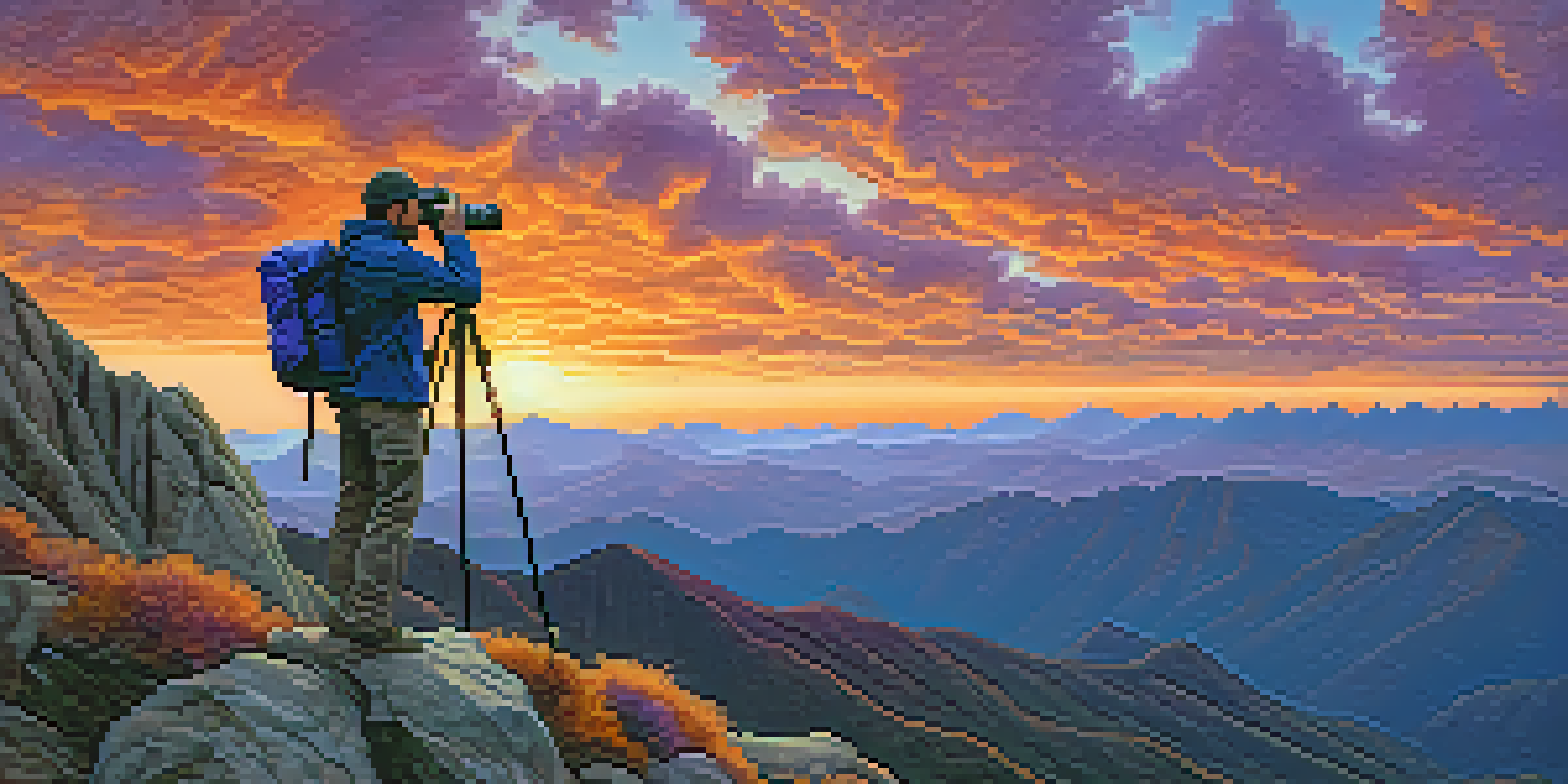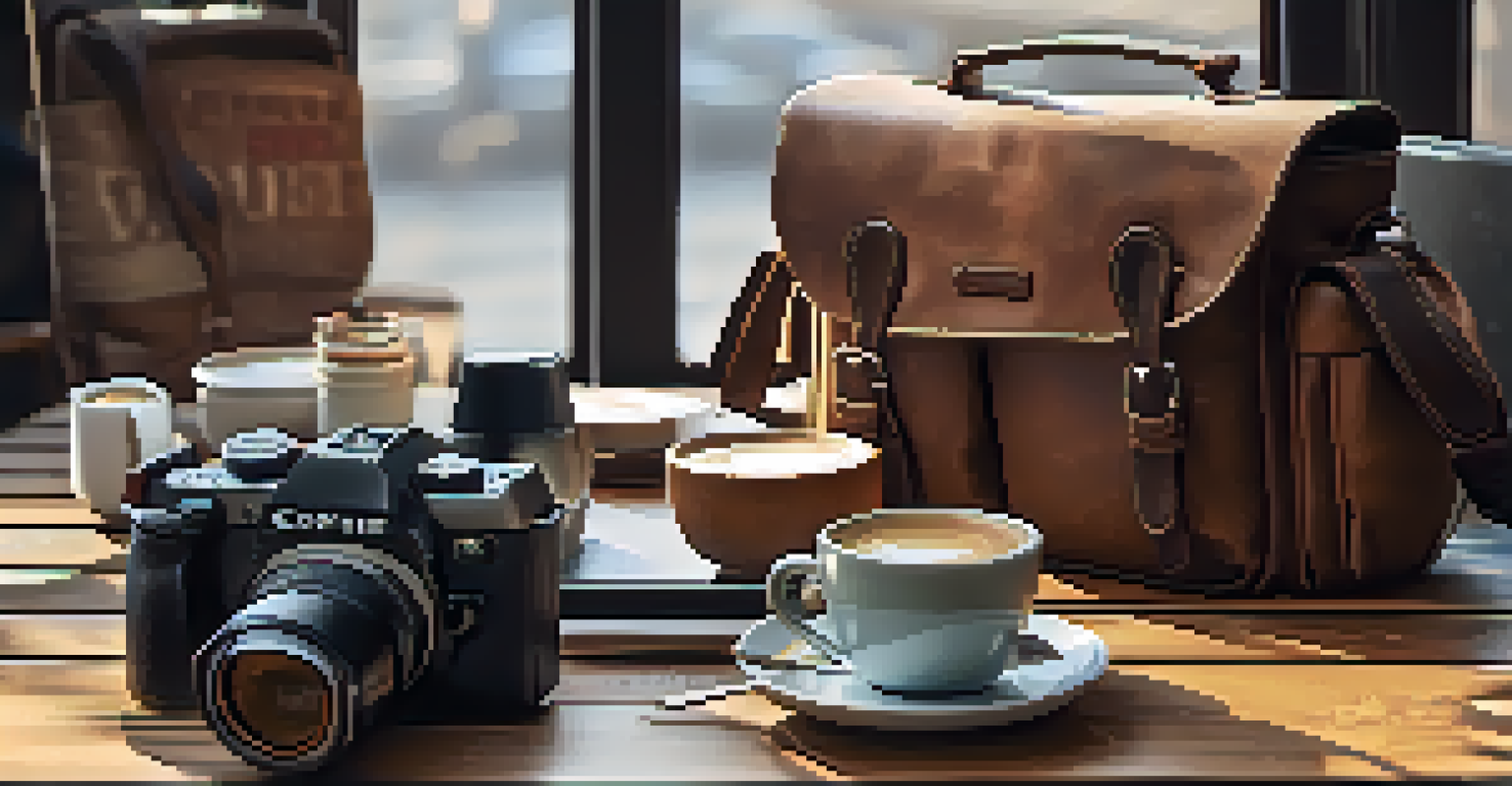Essential Tips for Traveling with Your Camera - A Complete Guide

Choosing the Right Camera for Your Travels
When it comes to traveling with your camera, the first step is selecting the right one. Consider your travel style; a lightweight mirrorless camera might be perfect for hiking, while a DSLR could be better for urban exploration. Think about your photography goals: do you want high-resolution images or just decent snapshots?
Traveling – it leaves you speechless, then turns you into a storyteller.
Don’t forget about the lenses! A versatile zoom lens can cover a wide range of situations, but if you prefer a specific style, like portraits or landscapes, packing an extra lens could be worthwhile. Ultimately, the best camera is one you feel comfortable using and can carry easily.
Also, consider your battery life and storage capacity. The last thing you want is to miss a stunning sunset because you ran out of battery or space. Bringing a couple of extra batteries and memory cards can save you from that heartbreak.
Packing Your Camera and Accessories Wisely
Packing your camera gear effectively can make a big difference in your travel experience. Use a padded camera bag to protect your equipment from bumps and drops, and make sure it’s easily accessible for those spontaneous shots. Consider packing your camera in a way that allows you to grab it quickly.

Don’t forget to include essential accessories like extra batteries, memory cards, and a lens cleaning cloth. A tripod can also be beneficial, but make sure it’s lightweight and compact to avoid extra weight in your luggage. If you’re traveling to a place with unpredictable weather, a rain cover for your camera is a smart addition.
Choose the Right Camera
Selecting a camera that fits your travel style and photography goals is essential for capturing great memories.
Lastly, keep your gear organized. Use small pouches or compartments within your bag to separate items, making it easier to find what you need when you need it. This organization will save time and make your travel experience more enjoyable.
Understanding Local Laws and Regulations
Before you embark on your adventure, it’s crucial to familiarize yourself with local laws regarding photography. In some countries, taking pictures of certain landmarks or people may be restricted or require permission. Researching these regulations can prevent awkward situations or fines during your travels.
Photography is the story I fail to put into words.
Additionally, be aware of cultural sensitivities. In some cultures, photographing people without their consent may be considered disrespectful. Always approach locals with respect and ask for permission when necessary; this can often lead to more genuine interactions and even great photo opportunities.
Lastly, keep any permits or documentation handy, especially if you’re visiting protected areas or national parks. Having the right paperwork not only keeps you compliant but also gives you peace of mind during your travels.
Mastering Travel Photography Techniques
Travel photography is all about capturing moments that tell a story. To do this effectively, familiarize yourself with basic photography techniques, such as composition and lighting. For instance, the rule of thirds can help you create more balanced and engaging images.
Experiment with different angles and perspectives. Instead of always shooting from eye level, try crouching down or finding a higher vantage point. This can add depth and interest to your photos, making them stand out.
Pack Smart and Stay Organized
Using a padded camera bag and organizing your gear ensures easy access and protection while traveling.
Lastly, don’t be afraid to shoot in different lighting conditions. Early mornings and late afternoons often provide the best natural light for photography. Embracing these golden hours can significantly enhance the quality of your travel photos.
Keeping Your Equipment Safe While Traveling
Safety should always be a priority when traveling with your camera gear. Invest in a sturdy, padded camera bag that can deter theft while also providing protection against drops. Always keep your camera close, whether it’s in your hand or within sight in your bag.
Consider using a camera strap that can be securely attached for added safety. This way, you can avoid the risk of dropping your camera while shooting. Additionally, be cautious in crowded places, as thieves often target tourists.
Lastly, if you’re traveling to a location known for theft, consider using discreet camera equipment or even a smartphone for certain shots. Blending in can help you enjoy your photography without drawing unnecessary attention.
Editing Your Travel Photos on the Go
Editing your travel photos can elevate them to the next level, and luckily, there are plenty of apps available to help you do this right from your phone or tablet. Apps like Lightroom Mobile or Snapseed offer user-friendly tools for adjusting exposure, contrast, and color balance.
Even simple edits, such as cropping or straightening, can make a significant difference in the final product. Make it a habit to review and edit your photos during downtime, like waiting for your flight or relaxing at a café. This way, you can share your adventures with friends and family in real-time.
Edit and Share Photos Easily
Editing your travel photos on-the-go allows you to share your adventures in real-time while maintaining authenticity.
However, be mindful not to over-edit. While it’s tempting to apply filters and effects, aim for a natural look that reflects the true essence of your travels. Striking the right balance will keep your photos authentic and memorable.
Creating a Travel Photography Portfolio
After your trip, consider compiling your best shots into a travel photography portfolio. This can be an exciting way to showcase your experiences and growth as a photographer. Use platforms like Adobe Portfolio or even social media to create an online presence where you can share your work.
When curating your portfolio, focus on quality over quantity. Choose images that represent your journey and highlight your unique perspective. A well-organized collection can resonate more deeply with viewers and tell a cohesive story.

Lastly, don’t hesitate to ask for feedback from fellow photographers or friends. Constructive criticism can help you improve and refine your skills for future travels, ensuring that each trip is even more rewarding than the last.